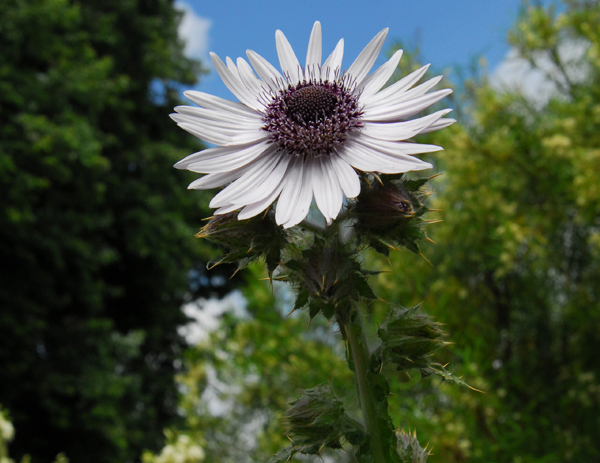How to Futureproof Your Garden

As the garden growing season gets underway for another year, I look at ways in which we can future proof our gardens to help protect them from extreme weather events like flash flooding or drought which the UK is expected to endure more of in the future.
Water-efficient gardening will pay dividends in another drought scenario. Water is lost from the soil both downwards by gravity and upwards by evaporation. Evaporation could be reduced by covering any bare soil with ground covering plants or by applying a thick layer of organic matter, such as garden compost, as a mulch to the soil. I’m always surprised at how few people actually do this. Not only will the mulch prevent moisture loss, but overtime it will gradually improve the nutrient content of your soil, open up the structure, supress weeds and protect plant roots from temperature extremes. Applying this now is the optimum time, but ensure the soil is moist first.
Many of us garden on low fertility sandy soil in this area, but by adding a biochar based product to the soil surface or incorporating into the planting hole, plant performance can be improved through water and nutrient retention. Whilst these products are relatively new to the market, the idea is not, it first stemmed from the man-made ‘Terra Preta’ soils of the Amazon where charred organic material was added to nutrient poor soil, increasing the ability to grow crops.
When we do get rain we need to ensure it is harvested, be that in water butts collected from shed, or greenhouse roofs. If you don’t have one now is a good time to install it. Reserves are built up over the winter, but by summer have depleted, at which point you can use ‘grey water’ if needed. Walking round the garden with a watering can is the best method for watering ensuring only the plants that most need a drink get it. Train them by giving a long deep drink to encourage deeper roots to seek out groundwater, before letting the soil dry out a bit. Watering little and often only encourages surface rooting, leading to the soil and roots drying out quickly, and so begins a vicious circle.
If you’ve adopted the right plant right place mentality for choosing your garden plants then this will stand you in good stead as plants from the worlds dry regions will generally be seeking out less water anyway. The Mediterranean is the obvious choice, but California with its Ceanothus, Chile, South Africa, South Western Australia and New Zealand all have plants to offer your garden too. Even in gardens without sun a Japanese dry garden could be opted for with gravel and stones.
If you need inspiration for creating a dry garden of your own then take a look at Savill Garden’s Dry Garden or New Zealand Garden or RHS Wisley Gardens Meditteranean basin walk which covers plants from a range of dry regions.